5 books about A la recherche du temps perdu
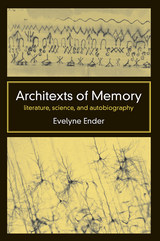
Architexts of Memory
Literature, Science, and Autobiography
Evelyne Ender
University of Michigan Press, 2005
In this impressively interdisciplinary study, Evelyne Ender revisits master literary works to suggest that literature can serve as an experimental laboratory for the study of human remembrance. She shows how memory not only has a factual basis but is inseparable from fictional and aesthetic elements. Beautifully written in accessible prose, and impressive in its scope, the book takes up works by Proust, Woolf, George Eliot, Nerval, Lou Andreas-Salome, and Sigmund Freud, getting to the heart of essential questions about mental images, empirical knowledge, and the devastations of memory loss in ways that are suggestive and profound. Architexts of Memory joins a growing body of work in the lively field of memory studies, drawing from clinical psychology, psychoanalysis, and neurobiology as well as literary studies.
"An important, cogently argued, subtle and rich study of a topic of great interest."
--Mieke Bal, University of Amsterdam
"A work of literary studies positioned at the intersection of tradition and innovation. Evelyne Ender's book brings fashionable cultural concerns to bear on traditional literary texts-her superb pedagogical skills lure and guide the reader through the most difficult psychoanalytical concepts."
--Nelly Furman, Cornell University
Evelyne Ender is Professor of French Studies, University of Washington. She is the author of Sexing the Mind: Nineteenth-Century Fictions of Hysteria.
"An important, cogently argued, subtle and rich study of a topic of great interest."
--Mieke Bal, University of Amsterdam
"A work of literary studies positioned at the intersection of tradition and innovation. Evelyne Ender's book brings fashionable cultural concerns to bear on traditional literary texts-her superb pedagogical skills lure and guide the reader through the most difficult psychoanalytical concepts."
--Nelly Furman, Cornell University
Evelyne Ender is Professor of French Studies, University of Washington. She is the author of Sexing the Mind: Nineteenth-Century Fictions of Hysteria.
[more]
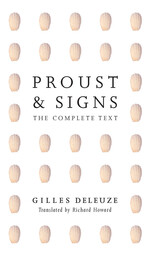
Proust And Signs
The Complete Text
Gilles Deleuze
University of Minnesota Press, 2003
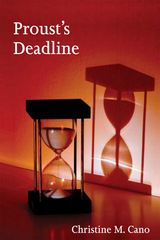
Proust's Deadline
Christine M. Cano
University of Illinois Press, 2006
Marcel Proust’s multivolume masterpiece, À la recherche du temps perdu, began to appear in 1913. Over the next fifty years, it gained a reputation as one of the greatest literary works of the twentieth century. But the novel’s classic image as a completed work was later shattered by the discovery of unpublished drafts, and the “war of the Prousts” has kept scholars arguing over its definitive form ever since.
Christine M. Cano’s Proust’s Deadline presents a concise history of the publishing and reception of À la recherche du temps perdu, and sorts out the most important issues that have arisen from the ensuing debates about the text. She ultimately shows how this quintessential “book about time” tells another story about time’s passage: the story of Proust’s mortal confrontation with the temporality of writing, publishing, and reading.
Christine M. Cano’s Proust’s Deadline presents a concise history of the publishing and reception of À la recherche du temps perdu, and sorts out the most important issues that have arisen from the ensuing debates about the text. She ultimately shows how this quintessential “book about time” tells another story about time’s passage: the story of Proust’s mortal confrontation with the temporality of writing, publishing, and reading.
[more]
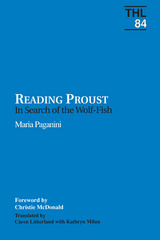
Reading Proust
In Search of Wolf-Fish
Maria Paganini
University of Minnesota Press, 1994
Reading Proust was first published in 1994.What readers of Proust in English translation miss, along with most of his critics, is how precisely his writing works, how exactly his subtle craftsmanship weaves the spell that seems to enchant and distract those who encounter it. Even critics who take up the idiosyncrasies of Proust's text, Maria Paganini asserts, refuse to test its limits for fear of running into the writer's deliberate opacities. Reading Proust puts an end to this interpretive arrest by focusing on the specificity of Proustian writing, revealing the patterns of thought and play of words peculiar to Proust's language, and showing how these metamorphose throughout La Recherche du temps perdu. Her work offers a new model for reading fictional prose, one that replaces the critical "why?" with the more practical and productive "how?" In well-known passages from La Recherche as well as often neglected ones, Paganini exposes a series of cryptic puns developed around three letters of the alphabet, "A," "R," and "T," which trigger many permutations in French: tare (flaw), rat, rater (to miss), and art. She shows how extensive passages of Proust's writings are articulated around a repetitive four-beat scansion using tare, rat, rater or arrêt, and art as its dominant theme. This four-beat scansion also translates into movement in space-point of departure, travel to the horizon, limit point, return-and Paganini uses such "promenades" to gain access to the text's mode of production. Her reading draws new meaning from this familiar yet enigmatic work and opens a new perspective on important issues such as the emergence of involuntary memory or Proust's approach to sexuality. Most significantly, though, Paganini confronts us in a very concrete way with Proust's craft, an approach that explains why and how his work continues to attract and fascinate readers. Maria Paganini is professor emerita of French at the University of Minnesota. She is the author of Flaubert, la présence de l'écrivain dans l'oeuvre.
[more]
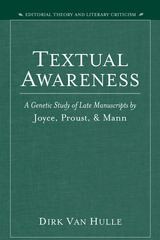
Textual Awareness
A Genetic Study of Late Manuscripts by Joyce, Proust, and Mann
Dirk Van Hulle
University of Michigan Press, 2004
Aware of the act of writing as a temporal process, many modernist authors preserved numerous manuscripts of their works, which themselves thematized time. Textual Awareness analyzes the writing processes in James Joyce's Finnegans Wake, Marcel Proust's À la recherche du temps perdu, and Thomas Mann's Doktor Faustus and relates these to Anglo-American, French, and German theories of text. By relating theory to practice, this comparative study reveals the links between literary and textual criticism.
A key issue in both textual criticism and the so-called crisis of the novel is the tension between the finished and the unfinished. After a theoretical examination of the relationship between genetic and textual criticism, Dirk Van Hulle uses the three case studies to show how?at each stage in the writing process?the text still had the potential of becoming something entirely different; how and why these geneses proceeded the way they did; how Joyce, Proust, and Mann allowed contingencies to shape their work; how these authors recycled the words of their critics in order to inoculate their works against them; how they shaped an intertextual dimension through the processing of source texts and reading notes; and how text continually generated more text.
Van Hulle's exploration of process sheds new light on the remarkable fact that so many modernist authors protected their manuscripts, implying both the authors' urge to grasp everything and their awareness of the dangers of their encyclopedic projects. Textual Awareness offers new insights into the artificiality of the artifact?the novel?that are relevant to the study of literary modernism in general and the study of James Joyce, Marcel Proust, and Thomas Mann in particular.
A key issue in both textual criticism and the so-called crisis of the novel is the tension between the finished and the unfinished. After a theoretical examination of the relationship between genetic and textual criticism, Dirk Van Hulle uses the three case studies to show how?at each stage in the writing process?the text still had the potential of becoming something entirely different; how and why these geneses proceeded the way they did; how Joyce, Proust, and Mann allowed contingencies to shape their work; how these authors recycled the words of their critics in order to inoculate their works against them; how they shaped an intertextual dimension through the processing of source texts and reading notes; and how text continually generated more text.
Van Hulle's exploration of process sheds new light on the remarkable fact that so many modernist authors protected their manuscripts, implying both the authors' urge to grasp everything and their awareness of the dangers of their encyclopedic projects. Textual Awareness offers new insights into the artificiality of the artifact?the novel?that are relevant to the study of literary modernism in general and the study of James Joyce, Marcel Proust, and Thomas Mann in particular.
Dirk Van Hulle is Assistant Professor of English and German Literature, University of Antwerp.
[more]
READERS
Browse our collection.
PUBLISHERS
See BiblioVault's publisher services.
STUDENT SERVICES
Files for college accessibility offices.
UChicago Accessibility Resources
home | accessibility | search | about | contact us
BiblioVault ® 2001 - 2024
The University of Chicago Press









